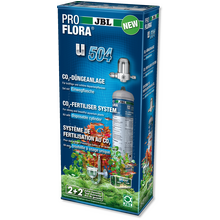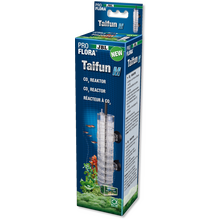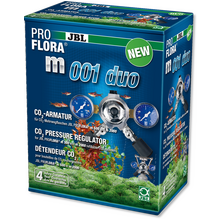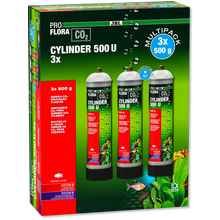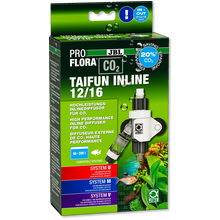Aquarium plants need carbon dioxide (CO2), which is their main nutrient, for vigorous and healthy growth. Without a CO2 fertiliser system, the CO2 content in the aquarium water will always be too low, as it is balanced with the CO2 content of the outside air. Only by using a CO2 fertiliser system can you raise the CO2 content in your aquarium water so that sufficient CO2 is available for your aquarium plants. A Bio-CO2 system does not require a pressurised gas cylinder and is ideal for beginners and smaller aquariums. For larger aquariums, CO2 fertiliser systems with CO2 cylinders are better because they can be easily refilled (m-system) or replaced (u-system). A solenoid valve (v001) enables night switch-off, because plants do not need CO2 during the dark phase and the aquarist saves 50% CO2 by switching off. You can achieve automatic CO2 regulation with a pH/CO2 control unit (pH Control).
Information and consent to cookies & third-party content
We use technically necessary cookies/tools to offer, operate and secure this service. Furthermore
,with your express consent
, we use cookies/tools for marketing, tracking, creating personalised content on third-party sites and for displaying third-party content on our website. You can revoke your consent at any time with effect for the future via the menu item ‘Cookie settings’.
By clicking on ‘Allow all’, you give us
your express consent
to the use of cookies/tools to improve the quality and performance of our service, for functional and personalised performance optimisation, to measure the effectiveness of our ads or campaigns, for personalised content for marketing purposes, including outside our website. This enables us to provide personalised online ads and extended analysis options about your user behaviour. This also includes accessing and storing data on your device. You can revoke your consent at any time with effect for the future via the menu item ‘Cookie settings’.
You can use the ‘Change settings’ button to grant and revoke individual consent to the cookies/tools and receive further information on the cookies/tools we use, their purposes and duration.
By clicking on ‘Only absolutely necessary’, only technically necessary cookies/tools are used.
Our data protection declaration tells you how we process personal data and what purposes we use the data processing for.
